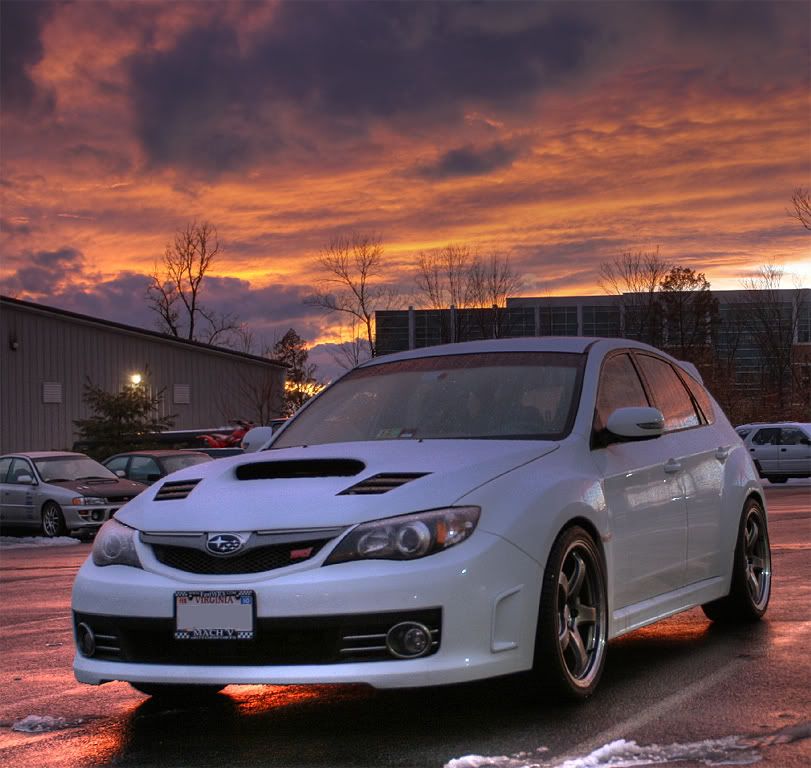
FMIC stands for "Front Mounted Intercooler," for those not in the know. All turbo Subaru models have their intercoolers up on the top of the engine -- that's why there's the big hood scoop. That top-mounted location means a very short pipe routing for the charge air, but it's not ideal for cooling. For that, the front of the car is perfect. Cooler intake temperatures mean more horsepower, and that's what we're after.
We chose the
TurboXS front-mounted intercooler kit because we like the guys at TurboXS and we've done business with them for a long time. They make nice intercooler kits, with proper high-strength T-bolt clamps, multi-layer silicone couplers, and polished aluminum tubing. The extra-huge intercooler core should work nicely with the larger turbo we'll be fitting.
One interesting note about this kit is that it includes TWO different piping options, so it'll fit both the 2008+ WRX as well as the 2008+ WRX STI. The STI still uses the old-style aluminum

manifold, with the turbo and stock intercooler separated by some piping. The WRX uses the newer plastic intake manifold, with the turbo outlet dumping directly into the stock intercooler. You'd need different plumbing for either option, so TurboXS thoughtfully included both with the kit.
Our kit is in a box in the showroom in front of our car. As soon as we can get some spare shop hours we'll be fitting it up. Stay tuned. In the mean time, I took one last picture of the car before the surgery...
In other news, we developed a harness bar for the 2008+ WRX/STI. This will allow you to mount four- and five-point harnesses in your car without having a full roll cage. We built and delivered the prototype bar to a happy customer

during our
Mother's Day Meltdown Spring Open House event, and should be building some production bars in the next couple of weeks. This isn't some slapped-together kludge part, either. Just to name one detail of this thing, we machined custom spacers to allow the proper freedom of movement of the factory shoulder belt even with the harness bar installed. Sure, it might have been easier to just throw some washers in there, but that's not the way we do things. Check our web site soon for pricing and availability.
 One of the problems I have with running a small business is that it's hard to set limits on how much time you spend on it. There's always more work to do! I say that because I've been finding it hard to make time to put my own project car on the dyno when I have a steady stream of customers asking for tuning. (It's a good problem to have.) So we've seen a lot of cars on the dyno lately, but my white car hasn't been one. On the plus side, the weather has been cooler, so when it finally does get back on there the ambient temps should be a little lower.
One of the problems I have with running a small business is that it's hard to set limits on how much time you spend on it. There's always more work to do! I say that because I've been finding it hard to make time to put my own project car on the dyno when I have a steady stream of customers asking for tuning. (It's a good problem to have.) So we've seen a lot of cars on the dyno lately, but my white car hasn't been one. On the plus side, the weather has been cooler, so when it finally does get back on there the ambient temps should be a little lower.








